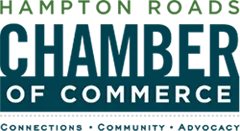Table of Contents
Arch Pain - Introduction
Arch pain is common in everyone, not just athletes. The arch of the foot absorbs the shock when you walk and bears your weight when you stand. Standing for long periods of time can predispose you to pain in the arch of the foot. Arch pain can also be caused by injury to the foot, as well as the wrong footwear, standing incorrectly, and flatfoot.
Arch pain refers to pain between the ball of the foot and the heel. The arches of the foot are made of muscles, tendons, and ligaments. Overuse, injury, weight gain, flatfoot, as well as other medical conditions can all cause pain in the arch.
The most common causes of arch pain in adults include:
Plantar Fasciitis
Pinched Nerve
Tendinitis
Sprains
Stress Fractures
Arthritis
Arch Pain Treatment
Foot pain is never normal. If you suffer from occasional arch pain, you may find relief with some home remedies, such as rest, icing the foot, and over-the-counter anti-inflammatory medications. If your pain persists or worsens, you are unable to bear weight because of the pain, or you develop redness or swelling to the foot, it’s time to make an appointment with your 1Foot 2Foot podiatrist. After diagnosing the underlying cause of your pain, your podiatrist will develop a treatment plan that may include the following:
- Specialized athletic strapping
- Modification of activity
- Foot-type specific arch supports or custom orthotics
- Bracing or cast protection
- Prescription medications
- Physical therapy
- Steroid or amniotic injections
- Regenerative medicine techniques such laser or shockwave therapy
- Surgical intervention
Recovery time will depend on the cause of your arch pain and the treatment necessary to resolve it. Your podiatrist will be able to provide you with an estimated recovery time once an accurate diagnosis is made.
Arch Pain Prevention
You can prevent arch pain in a few different ways, First, ensure you are wearing the proper footwear for your activity and that the shoe fits properly. Avoid going barefoot, as the lack of arch support while barefoot can trigger arch pain. Maintain a healthy weight to alleviate some of the stress on your feet. Warm up before exercising. Your podiatrist can show you stretches that you can incorporate into your routine. Lastly, take your time and pace yourself and rest when you need to.







